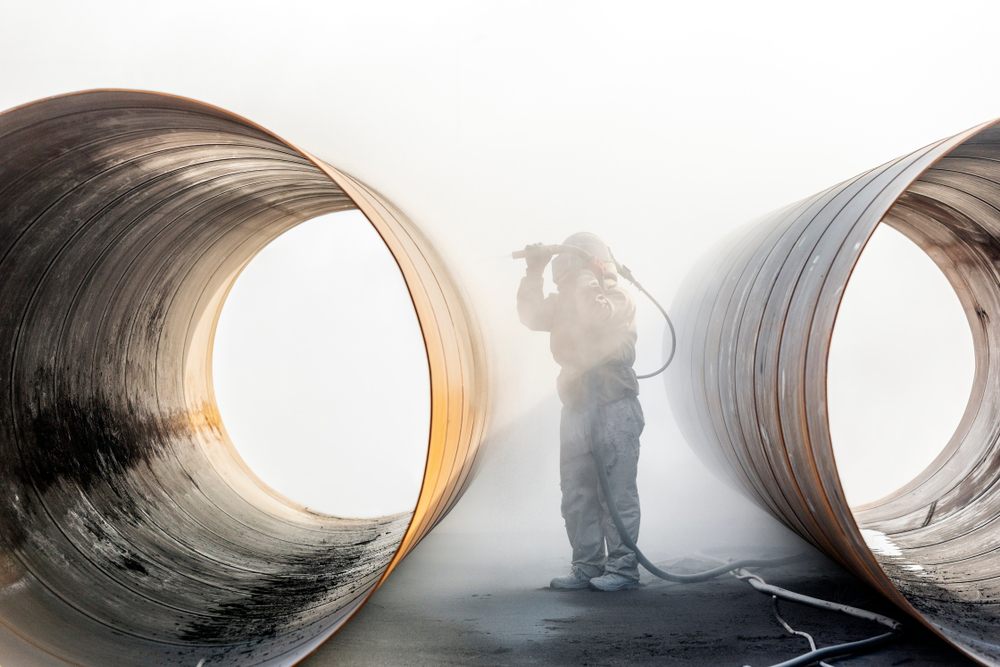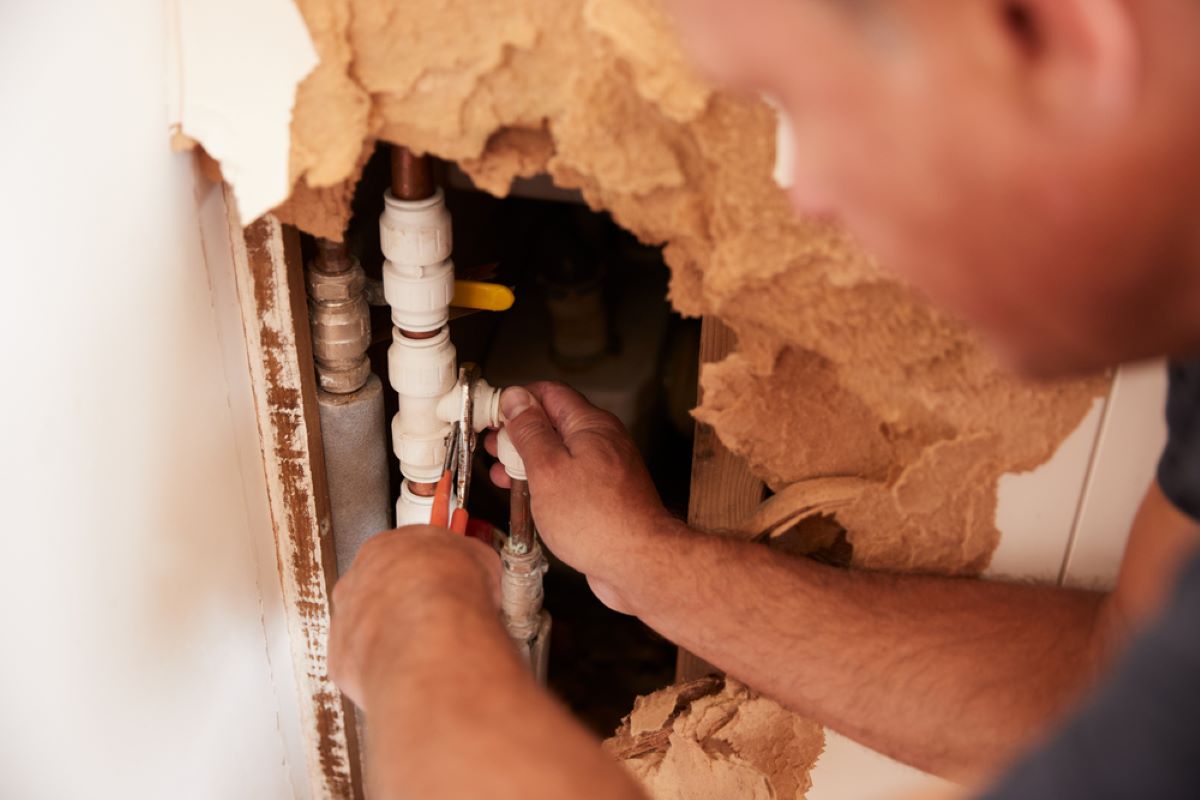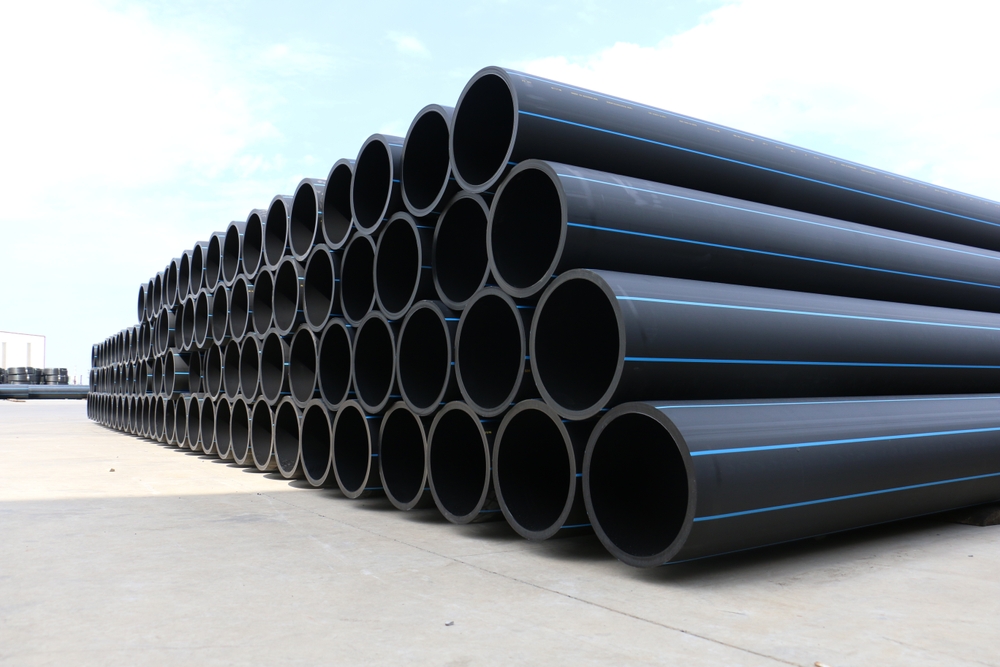To know external pipeline coating vs internal pipeline coating: Difference, keep reading!
There is a consensus that oil and gas pipelines are protected against pipeline corrosion by a barrier coating and a cathodic protection (CP) system, a combination mandated by governmental regulations in many countries as a means of corrosion prevention.
It is generally accepted that pipeline coatings provide excellent corrosion protection for pipelines. It is important to note that even if the coating is damaged or degraded and the bare steel substrate is exposed, CP will still provide corrosion protection as it covers the steel substrate from corrosion.
Below are a few reasons why underground pipes need coating:
The external surface of a pipe needs to be protected in a special way when it has to be buried underground. In this environment, steel pipes will suffer severe corrosion due to the corrosive nature of the soil.
The soil can be soft mud, sand, rocks, moisture, minerals, salt water, and many more. In this environment, the steel pipes will undergo severe corrosion.
In this article, we will discuss external and internal pipeline coating: which is the best?
Corrosion Factors
Factors that lead to internal corrosion are:
- Acid Soil
- Wet conditions
- Pressure
- The oxygen content
- Temperature
- And flow rate of the liquid carried in the pipelines
A non-structural and anti-corrosive pipeline coating is required to prevent internal and external corrosion.
Properties Of The Acceptable Pipeline Coating
- Its abrasion and impact resistance protect the coating layer from handling and stress damage.
- Surfaces can be coated with the coating internally or externally, chemically and water resistant.
- In cathodic protection (CP), the choice of pipe coating influences the criteria and design.
- Long-term corrosion protection due to excellent adhesion to the substrate.
External Pipe Coatings
The exterior of a pipeline is protected from corrosion with external pipe coatings. In contrast, the pipe’s interior is protected from caustic and abrasive fluids transported through it with internal pipe linings (linings).
As a result of the internal coating in the pipeline, friction is reduced in the pipeline, and, as a result, the flow rate is improved.
How Important Is External Pipeline Coating?
Pipelines are prone to corrosion, resulting in leaks, spills, and other mishaps with disastrous results. Numerous elements, such as oxygen, chemicals, and moisture, can contribute to corrosion.
The external coating aids in shielding the pipeline from harmful elements, reducing corrosion and lengthening the pipeline’s lifespan.
The external coating offers thermal insulation, abrasion resistance, impact resistance, and corrosion protection. These characteristics aid in shielding the pipeline from harm, ensuring the contents are transported securely and effectively.
Application Process
Surface Preparation: To guarantee that the coating adheres well, the pipeline’s surface needs to be cleaned and ready. This might entail grinding, sandblasting, or other surface-preparation techniques.
Application of Primer: A primer is applied to the pipeline to increase adhesion and guard against corrosion.
Coating application: Spraying, brushing, extruding, or wrapping are all methods used to apply the coating on the pipeline. The type of coating applied and the surrounding environment determine the coating’s thickness.
Inspection: The coated pipeline is examined to ensure it complies with the requirements and standards.
Internal Pipeline Coatings
There are two types of internal pipeline coatings: those that improve hydraulic efficiency and control corrosion. As a result, flow coatings typically applied at 2 mils don’t qualify as corrosion-resistant linings, usually around 5 mils thick.
It is possible to install 100% solids at much thicker levels than water or solvent-based coatings, close to the gap between traditional flow and corrosion-resistant coatings.
The absence of water or solvent means that 100% solids can be used as internal pipeline coatings because they increase hydraulic efficiency and prevent corrosion.
Why is the Internal Pipeline Coating Important?
Internal pipeline corrosion can reduce pipeline capacity, product contamination, and leaks, resulting in significant economic losses, environmental damage, and safety hazards. Coating the inside pipelines with a protective layer helps prevent these issues by creating a barrier between the pipeline and the transported fluids.
Application Process Of Internal Pipeline Coating
Surface preparation: Cleaning and preparing can entail getting rid of any old coatings, rust, scale, or other pollutants that might prevent the new coating from sticking. Power washing, chemical cleaning, or abrasive blasting can all be used to clean the surface.
Priming: After the surface has been thoroughly cleaned and cleared of impurities, a primer is applied to aid in promoting the coating’s adhesion to the surface of the pipeline. Usually a two-part epoxy or polyurethane substance, the primer is applied thinly with a sprayer or another application tool.
Application: Internal pipeline coatings can be applied using various techniques, including rolling, brushing, or spraying. The technique chosen will be determined by the coating’s characteristics and the pipeline’s particular needs.
Curing: Heat or air drying is used to hasten the curing process. The type of coating and the circumstances under which it is being applied will affect the cure time.
Other Types Of Pipeline Coating
Fusion Bonded Epoxy (FBE)
It is a thermosetting epoxy powder coating that is widely used for the protection of pipelines. It is applied using electrostatic spray guns and is cured at high temperatures to form a hard and durable coating.
FBE coating offers excellent resistance to corrosion, abrasion, and impact, making it an ideal choice for pipelines operating in harsh environments.
Polyethylene Coating
These coatings provide excellent corrosion protection and are chemical-resistant, making them ideal for harsh environments. They also have good impact resistance, which helps to protect the pipeline from damage during installation and transportation.
Coal Tar Enamel Coating (CTE)
Coal tar and mineral fillers are combined to create CTE, which is then applied to the surface of the pipe by heating it at a temperature between 250 and 300 °C. CTE coatings are frequently used to water and sewage pipelines because they offer great defense against corrosion and abrasion.
Coating Of Zinc
A pipeline can be coated with zinc, commonly known as galvanizing, by dipping it into a bath of molten zinc. On the surface of the pipe, the zinc creates a layer of protection that offers good corrosion resistance.
Zinc coatings are extremely affordable and have low maintenance. They could be more effective for pipes subjected to harsh chemicals or high temperatures.
FAQs
How does a 3-layer coating work?
In three-layer coatings, epoxy or FBE is applied first, followed by a thermoplastic adhesive coating, and finally, a polypropylene topcoat. Polyethylene (PE) and polypropylene (PP) coats are extruded coatings.
Why is 3M PPF coating used?
Invisible car paint protection film protects vulnerable painted areas of the vehicle from scratches, chips, and stains. Self-healing technology allows minor scratches to disappear.
What is PPF in microns?
Paint Protection Films from XPEL are between 165 and 225 microns thick, while the accepted norm is between 140 and 200 microns. A factory-fitted OEM film can be as thick as 300 microns on small key impact areas.
Conclusion
The pipeline network system transports oil, natural gas, and other fluids from one end to another safely and reliably. It is, therefore, imperative that entire pipeline networks be repaired, maintained, and inspected in a sophisticated manner to avoid interruptions. In our blog, external pipeline coating vs. internal pipeline coating, you’ll get all the information you want.





